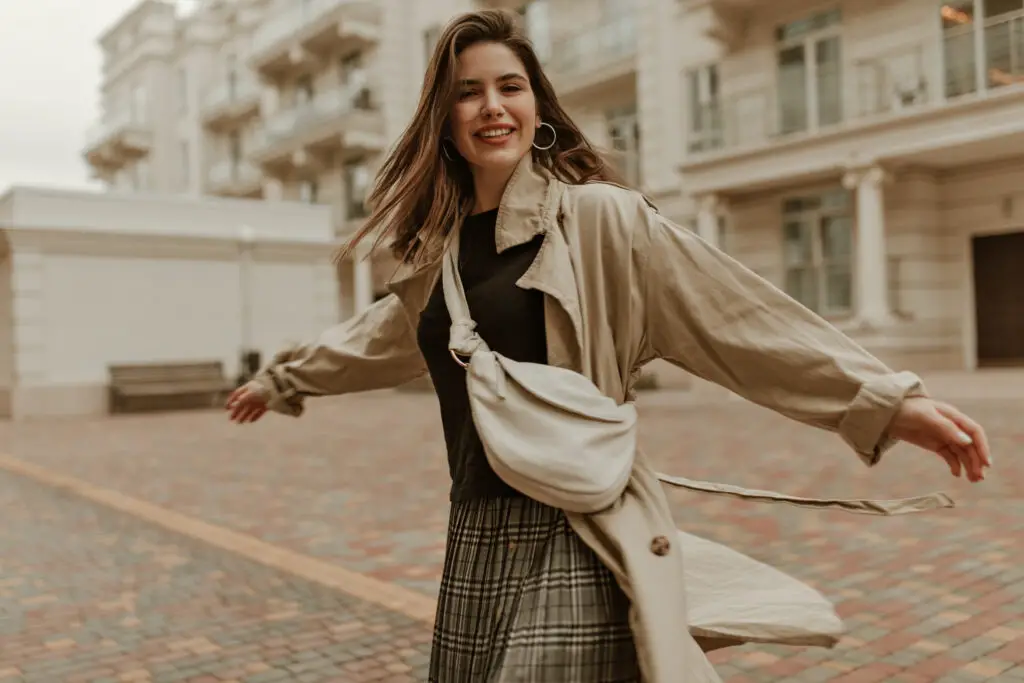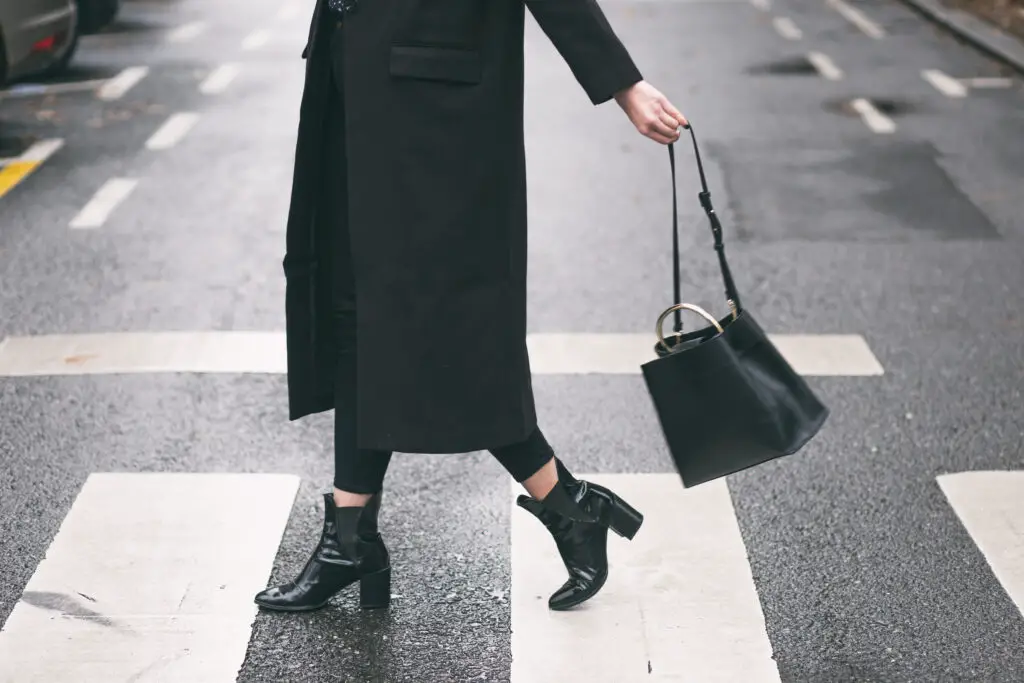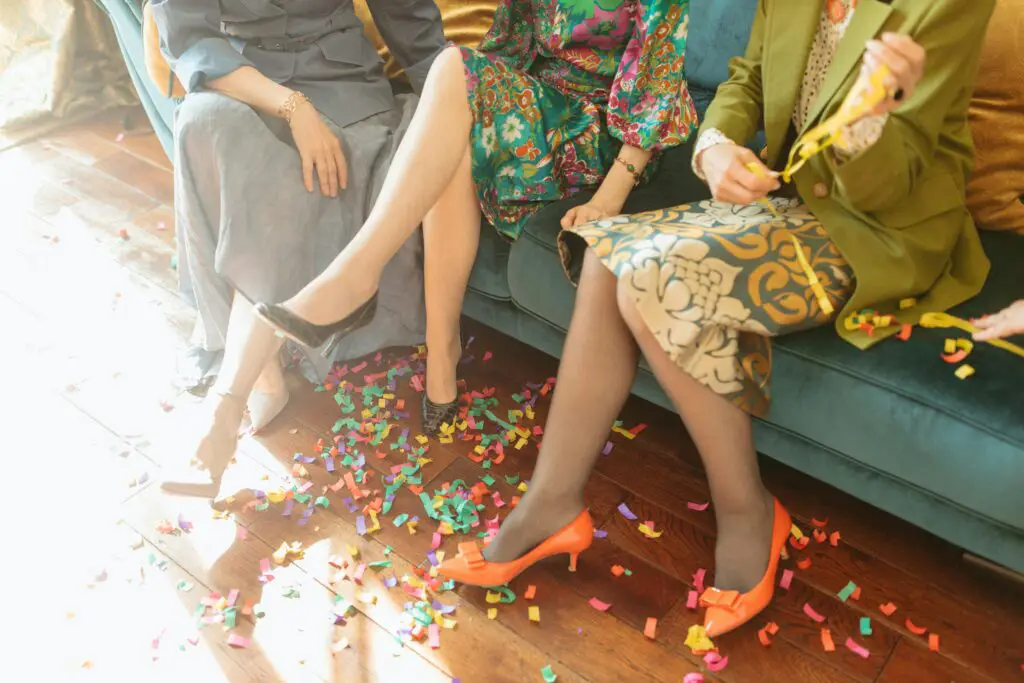1. “No White After Labor Day”

For decades, one of the most strictly followed fashion rules was the prohibition of wearing white after Labor Day. This guideline, rooted in the old-money fashion world, was seen as a symbol of summer’s end and the official start of fall fashion. Many people believed it was a sign of poor taste to flaunt white clothing once the calendar turned to September, deeming it too bright for the colder months. The rule made white a color reserved for warm weather, keeping the more muted, fall-inspired hues as the dominant choice after Labor Day.
As fashion evolved, this rule began to seem unnecessarily restrictive. Designers and everyday fashion lovers alike found that white was just as wearable in winter as any other season, and today it’s embraced year-round. Now, people mix white garments with seasonal colors and textures, showing that white can be just as chic in a cozy winter ensemble as it is in a breezy summer dress.
2. “Never Mix Black and Brown”

It was once considered a major fashion faux pas to pair black and brown together. This rule came from the idea that these two colors were too similar in tone and would clash rather than complement each other. The concept of color harmony dictated that such contrasting neutrals would never look polished or coordinated. Fashion experts claimed that sticking to one neutral was the key to a sophisticated look, which led to the widespread belief that black and brown simply didn’t mix.
However, over time, this rigid rule has fallen by the wayside. Today, the combination of black and brown is not only accepted but often celebrated for its modern, stylish appeal. Whether it’s pairing a black leather jacket with brown boots or combining a black dress with a brown handbag, fashion now embraces this once-taboo mix as a sign of daring creativity.
3. “Always Match Your Shoes to Your Bag”

Another outdated fashion rule was that your shoes and handbag should match perfectly, right down to the color and texture. This rule stemmed from the idea that a coordinated outfit was the pinnacle of chicness. Many fashion guidelines encouraged people to find shoes and bags that mirrored each other exactly—no exceptions allowed. The rule was seen as a measure of sophistication, ensuring that every outfit was polished to perfection from head to toe.
Today, that rigid matching scheme feels restrictive. Fashion-forward individuals have discovered that mixing different colors and styles of shoes and bags can add interest to an outfit and even create a more personalized look. Contrasting accessories have become a trend, with designers encouraging bolder, more eclectic combinations. It’s all about expressing individuality, and matching shoes to bags no longer holds the same importance.
4. “Don’t Wear Jeans to Formal Occasions”

There was a time when wearing jeans to any formal event was practically unthinkable. Jeans were relegated to casual settings, and formal attire was reserved for suits, tuxedos, or evening gowns. This rule helped to reinforce the idea that certain occasions required a higher standard of dress, while jeans were simply too laid-back for serious occasions. It wasn’t just a matter of tradition; it was seen as a matter of respect for the event and the people involved.
In recent years, the line between casual and formal wear has blurred. With the rise of “smart casual” and “business casual” dress codes, jeans are now often seen at everything from weddings to work events. Stylish denim, especially when paired with the right accessories or a tailored blazer, can make a statement at formal gatherings, proving that jeans are no longer confined to the casual realm.
5. “You Can’t Wear Prints with Stripes”

There was a time when combining prints with stripes was considered a major fashion blunder. Mixing patterns was thought to be too chaotic, and sticking to solid colors or coordinating prints was the “safe” approach. The belief was that patterns—especially bold ones like stripes—needed to stand alone to maintain a sense of order and elegance in an outfit. Fashion enthusiasts were cautioned against making the mistake of pairing multiple patterns, as it could make an outfit look cluttered or unkempt.
But these days, fashion is all about breaking the rules and experimenting with combinations that were once deemed off-limits. Mixing prints, including stripes, florals, and polka dots, is a trend that adds personality and fun to an outfit. Today, there’s no reason why you can’t throw together a striped shirt with a floral skirt, as long as the tones or styles complement each other.
6. “Only Wear Heels for Dressy Occasions”

High heels have long been considered the epitome of elegance and formality, often reserved for dressy occasions like weddings, galas, or upscale dinners. For years, the belief was that heels elevated an outfit and made it appropriate for more formal settings. Flats, on the other hand, were seen as too casual or even frumpy for dressier events. Heels became synonymous with femininity and sophistication, while anything less than a heel was considered beneath such occasions.
In today’s fashion world, however, comfort is key. The trend of “athleisure” has made its way into formal events, with stylish flats, sneakers, and even boots being acceptable alternatives to heels. Many designers are embracing practicality, knowing that women can feel confident and chic without sacrificing comfort. Heels may still have their place, but they no longer define what’s considered appropriate for dressy occasions.
